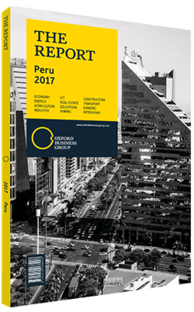Julio Velarde, Governor, Central Reserve Bank of Peru: Interview

Interview: Julio Velarde
How important is it for the country’s economic recovery to guarantee the execution of public and private investment projects?
JULIO VELARDE: GDP growth was 3.3% in 2015 and came close to 4% in 2016. Consumption growth has remained robust and exports are expanding at a faster rate, as the mining industry – mainly cooper projects – significantly increased Peru’s export capacity. The decrease in private investment is largely explained by the fall in mining investment, resulting from the decline in commodity prices between 2013 and 2015. However, excluding mining investment, private investment grew 0.6% in 2016 and we expect it to continue gaining momentum as a result of the confidence boost brought on by the new administration. Upon winning the 2016 election, President Pedro Pablo Kuczynski signalled a strong commitment to enhance private investment by unlocking public financing to ensure solid growth. The announcements considerably enhanced optimism in the business community. As a result, what we are seeing now is a shift in the mid-term growth and investment outlook. In addition, the government has adopted a constructive stance towards public investment. Even though this category decreased 7.5% and 0.4% in 2015 and 2016, respectively, we expect it to rebound by around 10% in 2017. Peru’s fiscal position remains strong. During the super-cycle in commodity prices, continuous fiscal surpluses contributed to reducing public debt significantly, to 3.8% of GDP in 2014.
How feasible is the goal of keeping inflation under 3%, and what factors could challenge this target?
VELARDE: We expect inflation to fall to 2.2% by end-2017. As in 2015, 2016 inflation was affected by supply shocks that temporarily deviated the rate from the target range. Food prices experienced drastic fluctuations due to difficulties created by changing climate conditions; the prices of some of Peru’s main exports skyrocketed. It must also be acknowledged that the sol depreciated by 15% in 2015. These two factors were major drivers of high inflation that year. As we expect a stabilisation of the exchange rate over the course of 2017, as well as a mitigation of supply factors, we are confident that inflation will return to the 1-3% target band during the second half of 2017.
What reforms are needed in the Private Pension System, and how can competition be increased to decrease commissions for affiliates?
VELARDE: The current pension system is good from a long-term perspective, since it is better to have a system that clearly defines contributions than one that defines benefits, like the old public pension system. At the same time, reforms are required. The previous administration focused on centralising pension collections and diversifying the administration of portfolios. However, future pensioners are not yet satisfied. The new administration has established a technical committee for proposing key pension reforms that will tackle issues such as lack of competition, high commissions and the replacement rate.
What was behind the 2.8% decrease in dollar deposits during the first quarter of 2016, and what is your current outlook on deposits?
VELARDE: Deposits in soles started to pick up since the second quarter of 2016 and so did dollar deposits, although at a slower pace. Deposits in soles are growing due to the increase in government spending. Another reason is that pension funds have switched their dollar deposits to soles, as they require more liquidity in soles to accommodate recent legislation allowing pensioners to withdraw up to 95% of their funds. In addition, as depreciation expectations diminish, depositors find it more attractive to save in soles and have started to de-dollarise their deposits. One can expect this trend to continue, as sol deposits grew by around 10% in 2016 and are projected to increase by 12% in 2017.
You have reached the limit of premium articles you can view for free.
Choose from the options below to purchase print or digital editions of our Reports. You can also purchase a website subscription giving you unlimited access to all of our Reports online for 12 months.
If you have already purchased this Report or have a website subscription, please login to continue.

